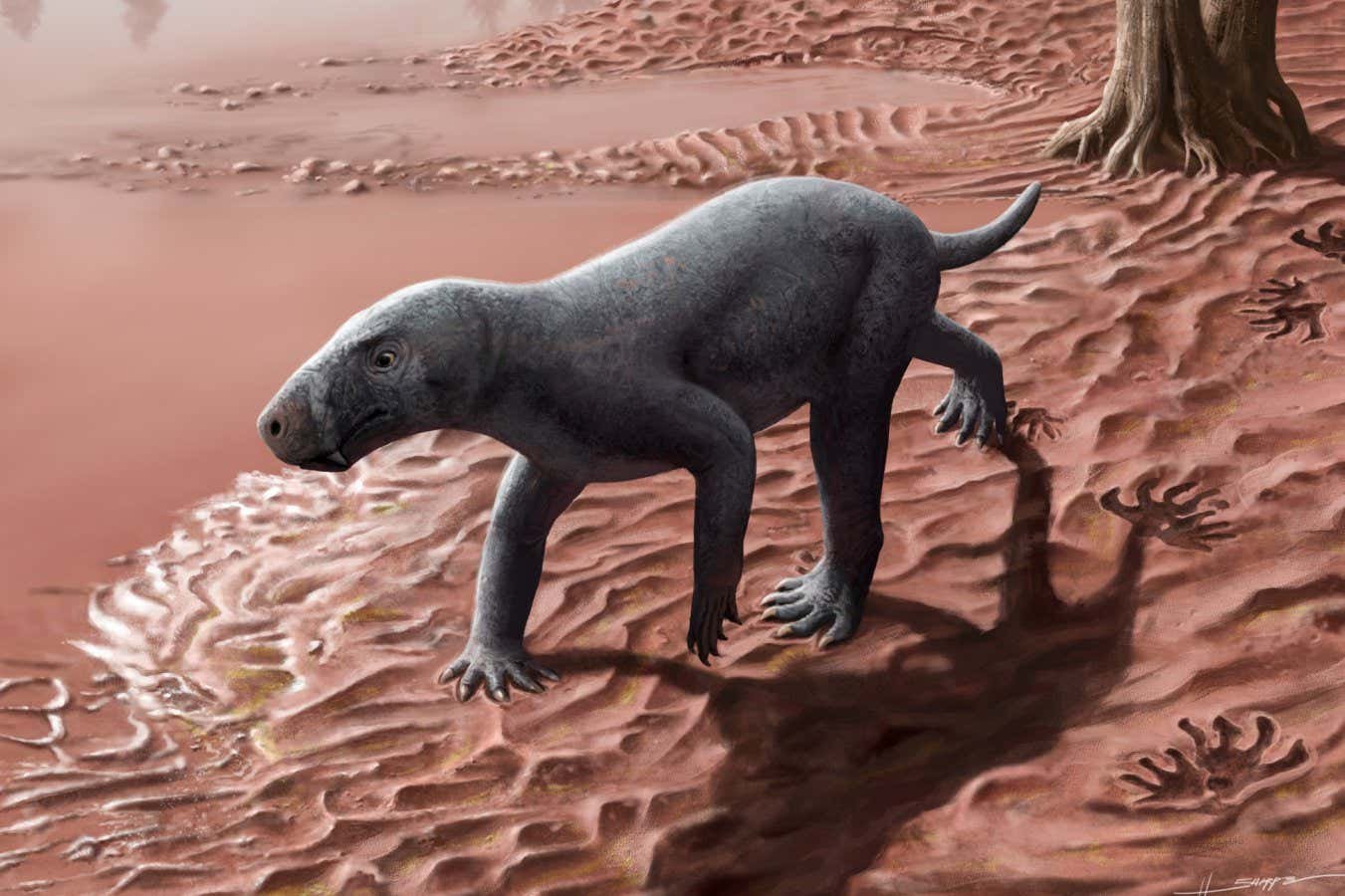A reconstruction of the oldest known gorgonopsian
Henry Sutherland Sharpe
The oldest known saber-toothed animal hunted large prey 270 million years ago – and its newly discovered remains could help us unravel how early mammalian relatives became warm-blooded.
The first land-based predators typically hunted relatively small prey. But things changed about 273 million years ago, when an event known as Olson’s Extinction shook ecosystems around the world. Afterwards, much larger terrestrial herbivores began to appear – and predators needed new weapons to dispatch such large prey, says Josep Fortuny of the Miquel Crusafont Catalan Institute of Palaeontology in Barcelona,
This may help explain why the fossilized partial skeleton of an ancient predator – which Fortuny and his colleagues have just discovered on the Spanish island of Mallorca – had saber teeth. These fangs are better at damaging large prey, as opposed to grabbing and holding smaller animals. “It was the first opportunity to have this type of tool to prey on herbivores,” says Fortuny.
Dating back an estimated 270 million years, the predator is the oldest known member of a group of meat-eaters known as the gorgonops, all of which had saber teeth. The largest gorgonopsians grew several meters long and had 15 centimeter long canines. The Mallorcan gorgonopsian was smaller, with a body length of about one meter and canines that were only 5 centimeters long. Fortuny says the researchers are waiting until they have analyzed the bones and teeth in more detail before giving the new gorgonopsian a name.
The old predator is significant for more than just its age. When it roamed Mallorca, the island was in the tropics as part of a supercontinent called Pangaea, but all previously known gorgonopsian fossils come from areas of the world that were at high latitudes 270 million years ago. The new finding suggests that the gorgonops actually originated closer to the equator.
It is possible that the adaptations they developed there – such as more energy efficient locomotion and the ability to hunt large prey – also included the ability to control their body temperature. As a result, they could spread to cooler habitats away from the equator.
Understanding more about this process is important, Fortuny says, because the gorgonopsians belonged to the therapsids, an animal group that also includes mammals. “There is a lot of discussion about the first steps in thermoregulation for this group,” he says.
Subjects:
